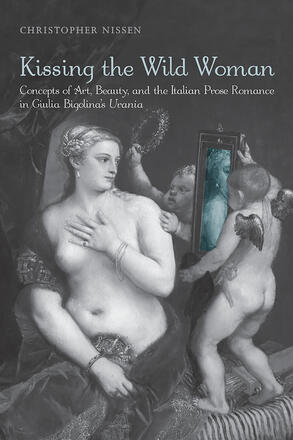
Kissing the Wild Woman
Concepts of Art, Beauty, and the Italian Prose Romance in Giulia Bigolina's Urania
Description
Giulia Bigolina's (ca. 1516-ca. 1569) Urania (ca. 1552) is the oldest known prose romance to have been written by an Italian woman. In Kissing the Wild Woman, Christopher Nissen explores the unique aesthetic vision and innovative narrative features of Bigolina's greatest surviving work, in which she fashioned a new type of narrative that combined elements of the romance and the novella and included a polemical treatise on the moral implications of portraiture and the role of women in the arts.
Demonstrating that Bigolina challenged cultural authority by rejecting the prevailing views of both painting and literature, Nissen discusses Bigolina's suggestion that painting constituted an ineffectual, even immoral mode of self-promotion for women in relation to the views of the contemporary writer Pietro Aretino and the painter Titian. Kissing the Wild Woman's analysis of this little-known work adds a new dimension to the study of Renaissance aesthetics in relation to art history, Renaissance thought, women's studies, and Italian literature.
Reviews
‘Nissen offers to the modern reader of Bigolina’s Urania a comprehensive and erudite perspective on this author’s place in literary history…This is a book that will be useful to scholars in all fields whose research depends on historicizing and theorizing genre, gender, and representation.’
- Stephanie Jed